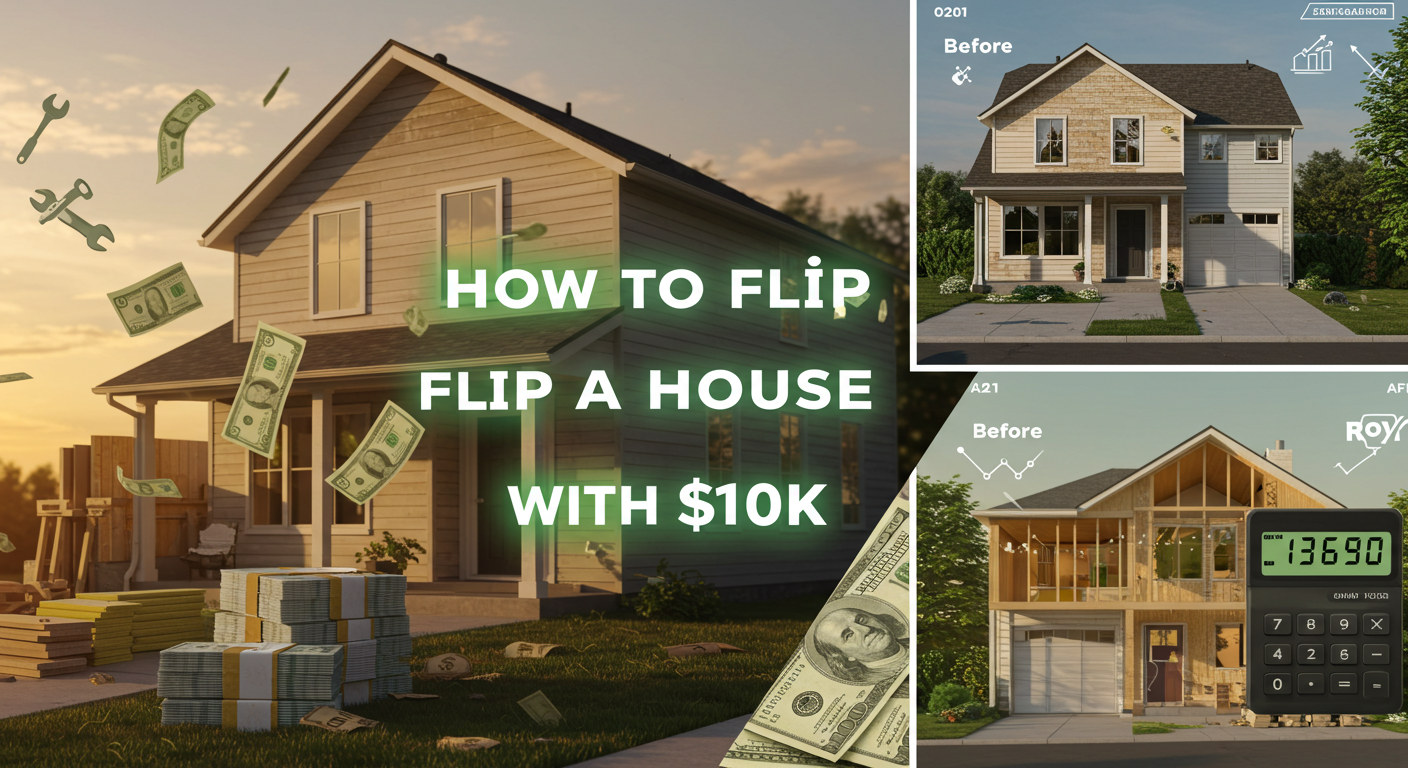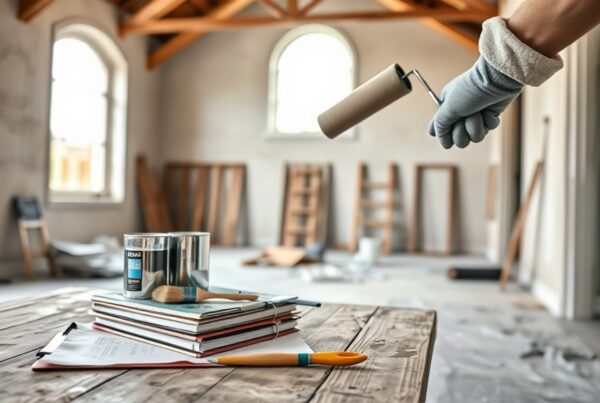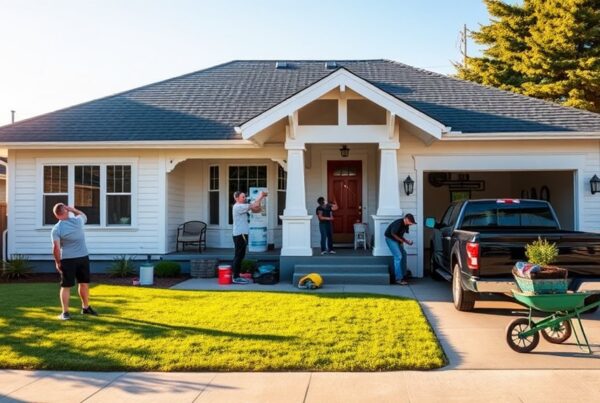Flipping a house with $10k is possible if you focus on strategic planning and high-impact upgrades. Start by targeting undervalued or distressed properties in rising neighborhoods, ensuring the purchase price aligns with the 70% rule (70% of ARV minus repair costs). Use creative financing like hard money loans or seller financing to stretch your budget. Prioritize cost-effective renovations, such as kitchen and bathroom updates, and source discounted materials to save. Stage the property and invest in professional marketing to attract buyers. With careful execution, you can maximize profit. Explore further to uncover detailed strategies for success.
Key Takeaways
- Use creative financing options like hard money loans, private lenders, or seller financing to maximize your $10k budget.
- Target undervalued or distressed properties in rising neighborhoods to secure below-market deals with high profit potential.
- Focus on high-impact, low-cost renovations like kitchen and bathroom upgrades while DIY-ing minor repairs to save on labor.
- Stage the property effectively and invest in professional photography to attract buyers and sell faster at a higher price.
- Set a competitive asking price based on market comparables and adjust strategies to align with current market conditions.
Understanding the 70% Rule in House Flipping
How can you guarantee a profitable house flip with limited funds? Start by mastering the 70% Rule, a cornerstone of financially-savvy house flipping. This rule dictates that you shouldn’t pay more than 70% of a property’s after-repair value (ARV) minus the estimated repair costs. For example, if a home’s ARV is $200,000 and repairs cost $30,000, your maximum price is $110,000 ($200,000 × 0.70 – $30,000). This formula guarantees you leave room for a profitable sale while accounting for renovation costs and unexpected expenses.
The 70% Rule isn’t just a guideline—it’s a safeguard. By sticking to it, you protect yourself from overpaying, which is critical when flipping houses on a tight budget. It also provides a buffer against market fluctuations, guaranteeing your investment remains viable even if property values dip slightly. To apply this rule effectively, you’ll need accurate estimates for both the ARV and repair costs. Overestimating the ARV or underestimating renovation costs can jeopardize your financial viability.
When you’re working with limited capital, like $10,000, the 70% Rule becomes even more essential. It forces you to focus on properties with high potential returns relative to their purchase price and repair needs. By adhering to this rule, you’ll minimize risk and maximize your chances of a profitable sale, even in a competitive market. Remember, successful house flipping isn’t about taking big risks—it’s about making calculated, strategic decisions that protect your investment. Additionally, understanding market dynamics and identifying properties in developing neighborhoods can further enhance your chances of success.
How to Flip a House With $10k
When working with a $10k budget, securing the right financing is critical to ensuring your house flip stays on track and profitable. With limited capital, you’ll need to explore creative financing options that align with your goals and minimize risk. Hard money loans are a popular choice for flipping houses, offering quick access to funds based on the property’s after-repair value (ARV). These loans typically cover up to 70% of the ARV, making them ideal for covering renovation costs. Private money lenders, such as friends or family, can also provide flexible terms and lower interest rates, giving you more control over repayment. Seller financing is another strategic option, allowing you to negotiate directly with the seller for lower upfront costs and tailored payment plans. If you already own a property, a home equity line of credit (HELOC) can release funds tied to your home’s equity, providing additional capital for your flip. Finally, wholesaling is a low-cost strategy where you secure a property under contract and assign it to another buyer for a fee, bypassing the need for significant upfront investment. Additionally, down payment assistance programs can offer grants or low-interest loans, making it easier to secure financing with minimal upfront costs.
| Financing Option | Key Benefit | Best For |
|---|---|---|
| Hard Money Loans | Quick funding, based on ARV | Investors needing renovation capital |
| Private Money Lenders | Flexible terms, lower interest rates | Personalized financing solutions |
| Seller Financing | Low upfront costs, negotiable terms | Buyers with limited capital |
| HELOC | Access to home equity funds | Existing property owners |
| Wholesaling | Minimal upfront investment | Low-budget real estate investments |
Finding and Acquiring the Right Property
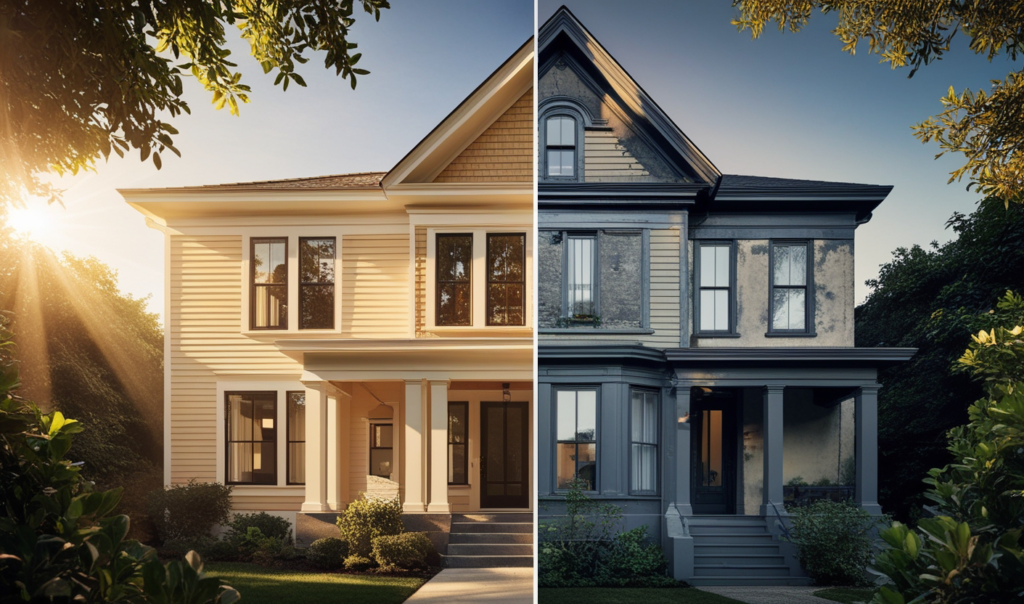
With financing secured, the next step is identifying a property that aligns with your $10k budget and profit goals. Start by researching local market trends to pinpoint neighborhoods with rising property values. Focus on finding undervalued or distressed properties, as these often offer the best potential for profit. Use tools like Deal Finder to locate off-market opportunities, which can help you avoid competition and secure lower purchase prices.
Attend auctions, foreclosure sales, and short sales to uncover properties priced below market value. These avenues can be goldmines for acquiring properties with significant upside potential. However, always conduct thorough inspections before committing. Inspections reveal the true condition of the property, helping you estimate renovation costs and avoid unexpected expenses that could derail your budget.
Networking is another critical component. Build relationships with local real estate agents and experienced investors who can provide insights and access to exclusive deals. They may know of distressed properties or motivated sellers that aren’t publicly listed, giving you a competitive edge. Leverage their knowledge of local market conditions to identify emerging opportunities and avoid overpriced areas.
When evaluating a property, prioritize those with manageable renovation needs that fit within your $10k budget. Avoid properties requiring extensive structural repairs, as these can quickly eat into your funds. By strategically finding and acquiring the right property, you position yourself to maximize profits while staying within your financial constraints.
Managing Renovations on a Tight Budget
While managing renovations on a tight budget can be challenging, focusing on high-impact upgrades and cost-saving strategies guarantees you maximize your $10k investment. Prioritize renovations that deliver the highest return on investment, such as kitchen and bathroom updates, which can greatly boost property value without breaking the bank. Allocate a contingency fund of 10-20% of your renovation budget to cover unexpected costs, ensuring you’re prepared for any surprises. Leveraging the BRRRR method can help you strategically recover your initial investment through refinancing, allowing you to scale your portfolio over time.
Consider DIY approaches for minor repairs and cosmetic updates to save on labor costs. Tasks like painting, installing fixtures, or laying tile can be tackled yourself with proper research and tools. Additionally, source discounted materials by negotiating with suppliers or shopping at salvage yards, which can dramatically reduce renovation expenses. Always keep detailed records of every expense to track your budget and calculate your return on investment accurately.
| Strategy | Benefit | Example |
|---|---|---|
| Prioritize ROI-focused upgrades | Maximizes property value | Kitchen cabinet refacing |
| Maintain contingency fund | Covers unexpected costs | Plumbing repairs |
| Use DIY approaches | Reduces labor costs | Painting walls or tiling floors |
Selling Strategies to Maximize Profit
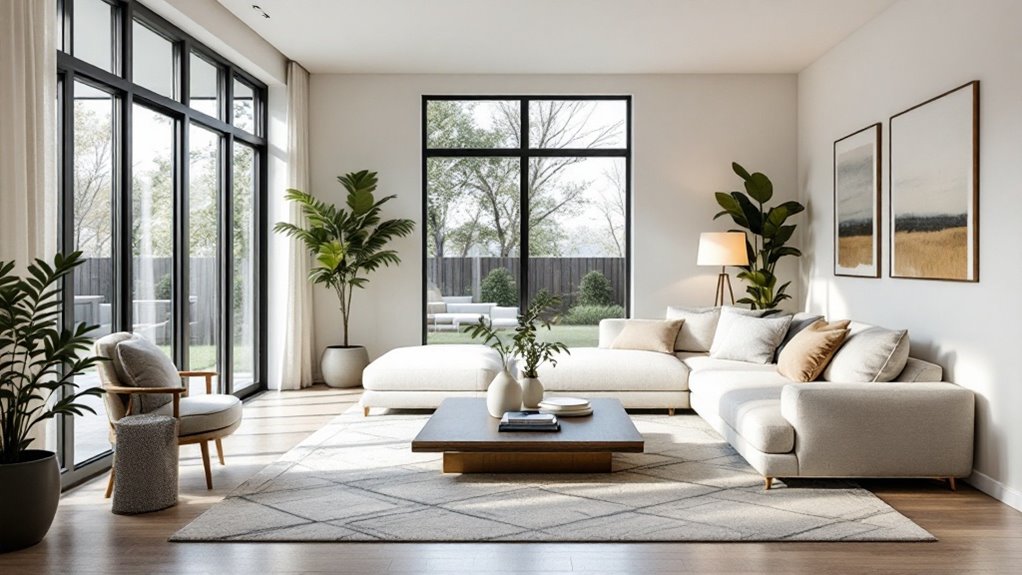
To maximize profit when selling your flipped house, start by setting a competitive asking price based on thorough market analysis of comparable properties. This guarantees your listing aligns with current market trends and attracts buyers quickly. Next, focus on staging the property to highlight its best features. Staged homes sell 73% faster and often command higher prices, making this a critical step in your selling strategies. Finally, invest in effective marketing strategies, including professional photography and online listings, to broaden your reach and generate interest. Additionally, consider using dynamic pricing strategies to adapt to real-time market changes and optimize your rental income potential.
- Set a Competitive Asking Price: Analyze recent sales of similar homes in your local market to determine a price that’s attractive yet profitable. Overpricing can deter buyers, while underpricing leaves money on the table.
- Stage the Property: Declutter, depersonalize, and arrange furniture to create a welcoming atmosphere. Highlight key selling points like spacious layouts or modern upgrades to appeal to buyers.
- Leverage Effective Marketing: Use high-quality professional photography and list your property on popular real estate platforms. Tailor your messaging to emphasize unique features and target peak buying seasons for maximum exposure.
During negotiations, stay informed about the local market and know your bottom line. Monitor market conditions closely, as timing your sale during peak buying seasons can increase your profit by up to 10%. By combining these strategies, you’ll position your property to sell quickly and at the best possible price.
Conclusion
With just $10k, you can turn a crumbling shack into a goldmine if you play your cards right. Stick to the 70% rule like your life depends on it, hunt for deals like a hawk, and squeeze every penny out of your budget. Renovate smart, not lavish, and sell with the precision of a chess grandmaster. Master these moves, and you’ll flip houses like a pro—even on a shoestring budget.

